Filter by
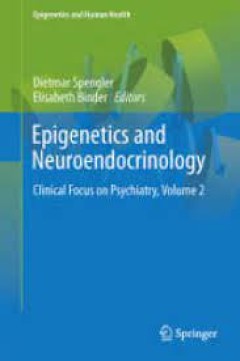
Epigenetics and Neuroendocrinology Clinical Focus on Psychiatry, Volume 2
The field of neuroendocrinology has extended from the initial interest in the hypothalamic control of pituitary secretion to embrace multiple reciprocal interactions between the central nervous system (CNS) and endocrine systems in the coordination of homeostasis and various physiological responses from adaptation to disease. Most recently, epigenetic mechanisms were recognized for their role i…
- Edition
- -
- ISBN/ISSN
- 978-3-319-29901-3
- Collation
- 22 b/w illustrations, 3 illustrations in colour
- Series Title
- -
- Call Number
- -

Epigenetics and Neuroendocrinology Clinical Focus on Psychiatry, Volume 1
The field of neuroendocrinology has extended from the initial interest in the hypothalamic control of pituitary secretion to embrace multiple reciprocal interactions between the central nervous system and endocrine systems in the coordination of homeostasis and various physiological responses from adaptation to disease. Most recently, epigenetic mechanisms were recognized for their role in the …
- Edition
- -
- ISBN/ISSN
- 978-3-319-24493-8
- Collation
- 6 b/w illustrations, 30 illustrations in colour
- Series Title
- -
- Call Number
- -
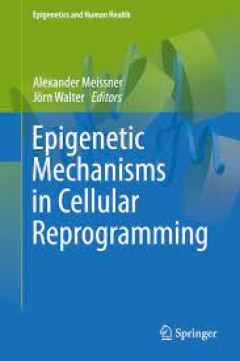
Epigenetic Mechanisms in Cellular Reprogramming
The ability of a single genome to give rise to hundreds of functionally distinct cell type programs is in itself remarkable. Pioneering studies over the past few decades have demonstrated that this plasticity is retained throughout development, a phenomenon of epigenetic programming and reprogramming that remains one of the most fascinating areas of modern biology, with major relevance to human…
- Edition
- -
- ISBN/ISSN
- 978-3-642-31974-7
- Collation
- 1 b/w illustrations, 19 illustrations in colour
- Series Title
- -
- Call Number
- -

Epigenetics - A Different Way of Looking at Genetics
This book presents epigenetics research as a new way of looking at genetics. Topics range from basic epigenetics mechanisms to development of cells and organisms and the biological basis of diseases. In addition the book focuses on immunology and the role of viruses in epigenetics. The last part of the book highlights proteins and peptides as epigenetic modulators.
- Edition
- -
- ISBN/ISSN
- 978-3-319-27186-6
- Collation
- 32 b/w illustrations, 9 illustrations in colour
- Series Title
- -
- Call Number
- -
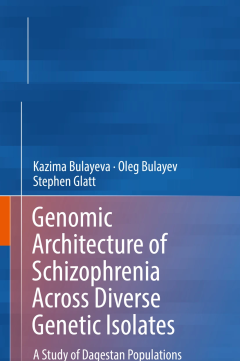
Genomic Architecture of Schizophrenia Across Diverse Genetic Isolates
This book presents a long-term study in genetic isolates of indigenous small ethnics of Dagestan, located in the North-East part of Caucasus in Russia. Dagestan is characterized by extreme cultural and linguistic differences in a small geographic area and contains 26 indigenous ethnic groups. According to archeological data these indigenous highland ethnics have been living in the same area for…
- Edition
- -
- ISBN/ISSN
- 978-3-319-31962-9
- Collation
- XXVIII, 142
- Series Title
- -
- Call Number
- 616.89
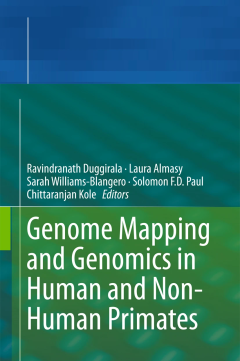
Genome Mapping and Genomics in Human and Non-Human Primates
This book provides an introduction to the latest gene mapping techniques and their applications in biomedical research and evolutionary biology. It especially highlights the advances made in large-scale genomic sequencing. Results of studies that illustrate how the new approaches have improved our understanding of the genetic basis of complex phenotypes including multifactorial diseases (e.g., …
- Edition
- -
- ISBN/ISSN
- 978-3-662-46305-5
- Collation
- VIII, 305
- Series Title
- -
- Call Number
- 575 GEN

Genome Editing
This comprehensive volume explores human genetic engineering its pre-clinical and clinical applications, current developments, and as treatment for hereditary diseases. It presents and evaluates the most recent advances in the understanding of mammalian host DNA repair mechanisms, such as double-strand break induced gene targeting and mutagenesis, the development of zinc-finger nucleases, genom…
- Edition
- -
- ISBN/ISSN
- 978-1-4939-3507-9
- Collation
- XVI, 263
- Series Title
- -
- Call Number
- 363.92 GEN

Genetics, Evolution and Radiation
This book is dedicated to the great scientist and outstanding individual Nikolay Wladimirovich Timofeeff-Ressovsky. The book brings together a number of brief stories/essays about Timofeeff-Ressovsky including “Stories told by himself”, and scientific chapters addressing his major research areas: genetics, radiobiology, radiation ecology and epidemiology, and evolution. Timofeeff-Ressovsky …
- Edition
- -
- ISBN/ISSN
- 978-3-319-48837-0
- Collation
- XX, 558
- Series Title
- -
- Call Number
- 363.92 GEN
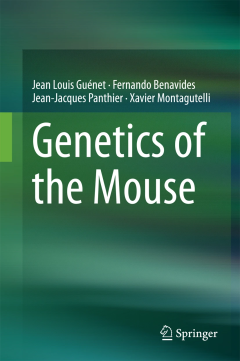
Genetics of the Mouse
This book, written by experienced geneticists, covers topics ranging from the natural history of the mouse species, its handling and reproduction in the laboratory, and its classical genetics and cytogenetics, to modern issues including the analysis of the transcriptome, the parental imprinting and X-chromosome inactivation. The strategies for creating all sorts of mutations, either by genetic …
- Edition
- -
- ISBN/ISSN
- 978-3-662-44286-9
- Collation
- XVII, 408
- Series Title
- -
- Call Number
- 363.92 GUE g
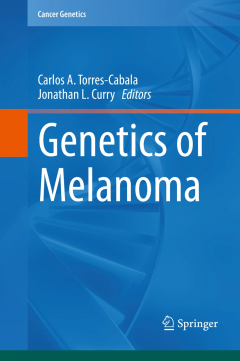
Genetics of Melanoma
This book discusses the molecular, biological, pathological, and clinical aspects of melanoma, with special emphasis in the new concepts of melanoma genetics. A multidisciplinary group of experts in Genetics, Dermatology, Pathology, and Melanoma Medical Oncology contribute state-of-the-art knowledge in melanoma research and clinical management, not only exposing the current status of knowledge …
- Edition
- -
- ISBN/ISSN
- 978-1-4939-3552-9
- Collation
- XV, 288
- Series Title
- -
- Call Number
- 616 Gen
 Computer Science, Information & General Works
Computer Science, Information & General Works  Philosophy & Psychology
Philosophy & Psychology  Religion
Religion  Social Sciences
Social Sciences  Language
Language  Pure Science
Pure Science  Applied Sciences
Applied Sciences  Art & Recreation
Art & Recreation  Literature
Literature  History & Geography
History & Geography